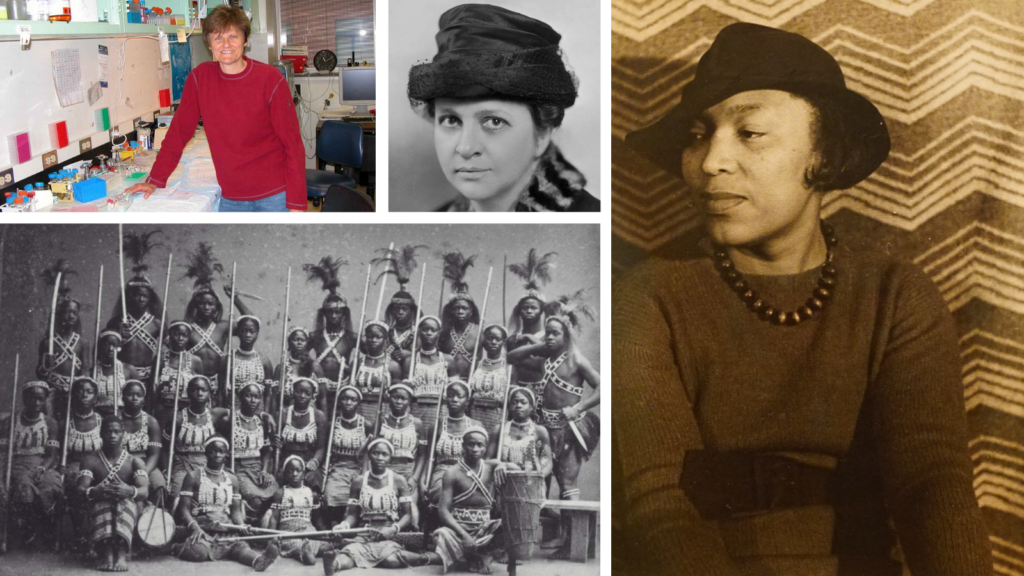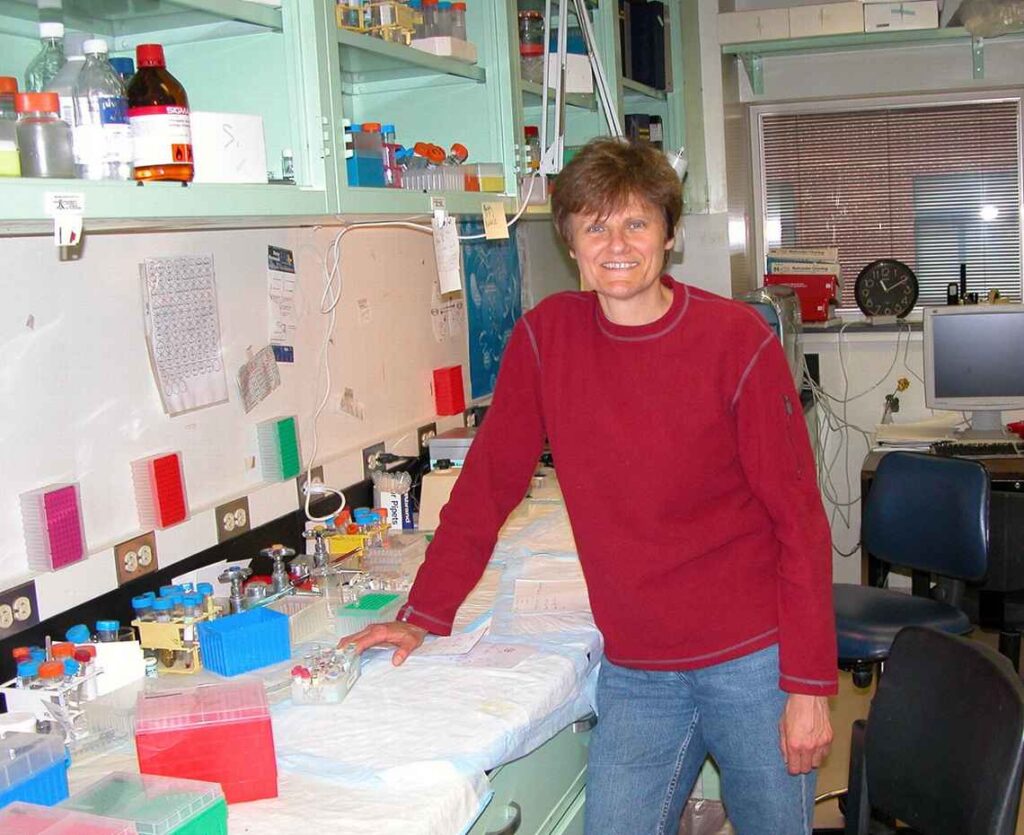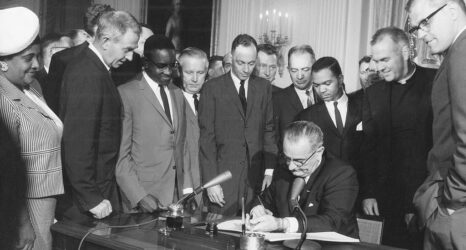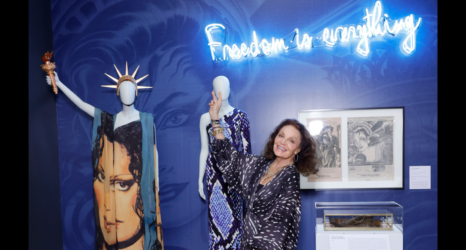
Pre-pandemic, I attended a weekly trivia night at a local restaurant. Playing week after week, I noticed a pattern: When the questions pertained to people, nine times out of 10 they were about men.
One night, I challenged the male host to create trivia questions focused on women. The following week’s questions did focus on women, but the host noted how difficult it was to come up with questions that a general audience could answer. And in fact, they were challenging. Which state had the first female U.S. senator? Who was the first female state governor?* Even I didn’t know the answers.
History books and mass media are filled with stories of men’s achievements: Christopher Columbus, George Washington, Thomas Edison, Charles Darwin, Dr. Martin Luther King Jr.—and the list goes on. A Time Magazine article of the 100 most significant historical figures included just three women, which the authors partially attributed to women’s underrepresentation in Wikipedia.
As Dr. Francesca Tripodi found, women represent only 18.25 percent of English-language Wikipedia biographies as of February 2020, but are more than 25 percent of page deletion requests. Wikipedia has a notability standard for articles: Is there significant coverage in reliable secondary sources? Because historical women were so minimally covered in historical sources, many fail to meet this standard. Furthermore women “are more likely to be considered non-notable even if they meet Wikipedia’s criteria for inclusion,” Tripodi noted.
The absence of women from historical records and popular narrative can make us think there are few notable women. This is not the case. Throughout history, women have been accomplishing, discovering and innovating— yet their achievements have been largely left out of the historical narrative, to our detriment. When women’s accomplishments are not documented, published or promoted, it leads to a lack of role models for girls and women to emulate.
When women’s accomplishments are not documented, published or promoted, it leads to a lack of role models for girls and women to emulate.
As American tennis player Billie Jean King said, “You have to see it to be it.” Female role models act as critical inspiration for girls and women by showing what is possible. In a recent study, researchers recruited top women leaders from science, technology, engineering and mathematics (STEM) companies to speak to girls ages 12 to 16. These role models had a positive effect on the girls’ enjoyment and expectations of success in math as well as aspirations for STEM careers, while also dispelling gender stereotypes such as “boys do better in math than girls.” In another study, female college students with an interest in pre-med who were given information about successful female physicians reported higher interest in a medical career than those who were not exposed to the role models.
Although they are largely left out of the narrative, historical and present-day female role models are abundant. While I’ve previously written about rolling suitcase inventor Anita Willets-Burnham and messenger RNA (mRNA) researcher Dr. Katalin Karikó, there are many more.

Female Exploration
In 1911, French opera singer and Buddhist scholar Alexandra David-Néel began a 14-year trek through Asia which culminated in 1924 at age 55 when she dressed as a beggar to sneak into the forbidden city of Lhasa, the Tibetan capital. While David-Néel became the first European woman to enter the city and documented her experiences in a book, My Journey to Lhasa, she is little-known, unlike male adventurers (e.g. Marco Polo, Sir Edmund Hillary) immortalized in history books.
Even recent listings of notable explorers fail to list David-Néel or other female explorers such as Scottish Cairngorm Mountains explorer Nan Shepard or Haitian and Jamaican Voodoo explorer Zora Neale Hurston.
Global Warming
In 1856, Eunice Newton Foote devised an experiment to figure out why air is colder at higher elevations. She discovered that carbon dioxide maintains a high temperature longer than other gases and thus concluded that increased carbon dioxide in the atmosphere would lead to global warming. At a scientific conference, Foote’s research was presented by a man—Joseph Henry, secretary of Smithsonian Institution—who downplayed her findings.
Three years later, physicist John Tyndall published similar findings: Water vapor and carbon dioxide contribute to atmospheric heating. Tyndall’s work was celebrated as a breakthrough and became part of climate science canon. Meanwhile, Foote’s work was not rediscovered until 2011.
Female Army
The Amazons of Dahomey are the only documented all-female army in modern history. In the mid-1800s, Dahomey had thousands of female troops, trained since childhood on fighting and survival skills.
After seizing the area that is now southern Benin in 1894, the French disbanded the army, opened schools and left the Amazons out of the curriculum, thus erasing the female warriors from history. Today Beninese researchers are tracking down descendants to recapture the humanity of the Amazons and their story.
Computer Programming
In the 1940s and ’50s, computer manufacturers and other companies needed programmers. At the time, men in the field preferred to focus on hardware, viewing programming as a menial task. An all-female team—Kathleen McNulty, Jean Jennings, Betty Snyder, Marlyn Wescoff, Frances Bilas and Ruth Lichterman—wrote instructions for the world’s first programmable computer, the Electronic Numerical Integrator and Computer (ENIAC), in the mid-1940s. These women were the first to discover that code never works correctly the first time and that the programmer’s main work is to troubleshoot the bugs. To aid debugging, Betty Snyder created the concept of a ‘break point’ in which a program could be stopped while running.
In the 1950s, another female computer pioneer, Dr. Grace Hopper created the compiler and the COBOL programming language. When coding jobs exploded in the 1950s and 60s, there were no associated gender stereotypes as employers just wanted people who could think logically and were good at math. In 1967, Cosmopolitan magazine featured an article on “The Computer Girls,” noting that they could earn $20,000 per year (more than $160,000 in 2021 money).
It wasn’t until the mid-1980s when women were forced out of the field. Women’s participation in computer science programs plummeted from 37.1 percent in 1984 to 17.6 percent in 2008 and have averaged 18.5 percent in the years since.
By the ’80s, the work of the pioneering women had been forgotten. The image of a computer coder became a young white male geek—think Bill Gates, Steve Jobs and characters in popular movies like War Games and Weird Science. I was an undergraduate computer science major in the 1990’s, but I recall little, if any mention of these women pioneers. The course textbook on Ada programming left out the fact that the language was named for 1800’s computer algorithm inventor Ava Lovelace.
The New Deal
While President Franklin D. Roosevelt most often gets credited for 1933’s New Deal, his labor secretary Frances Perkins was the driving force.
When Roosevelt asked Perkins to join his Cabinet, she agreed on the condition that he support her sweeping social program agenda which included the 40-hour work week, minimum wage, unemployment compensation, worker’s compensation, elimination of child labor, Social Security and universal healthcare. Roosevelt endorsed the agenda and Perkins became the first female U.S. Cabinet secretary.
Perkins forged the blueprint for the Social Security Act, signed into law in 1935, and oversaw crafting of the Fair Labor Standards Act of 1938, which set a minimum wage and maximum work hours and abolished child labor. A 1944 Collier’s magazine article, “The Woman Nobody Knows,” said “the Roosevelt New Deal” was more aptly titled “the Perkins New Deal.”
By the time of Roosevelt’s death in 1945, Perkins had accomplished all but one of the items in her original agenda: universal healthcare.
What Can We Do to Correct the Narrative?
Search.
While these are just a few examples of pioneering female role models, many more exist. But you must hunt for them. Look for and share examples of female role models in your field. They may require specific key words to find them. For example, a Google search of “female explorers” returns 27.4 million results, while a search for “female climate scientists” returns 52 million hits.
Speak to students.
If you are a woman, share your career experiences with girls and boys in your family and with students in your local high school or college. If you are a teacher or professor, include examples of women in your lectures and class assignments. It’s crucial that girls learn about exemplar women, but it is just as critical that boys see women as role models. Giving boys this exposure not only combats gender stereotypes but also will help young men to respect girls and women in school and later in the workforce.
Write about women’s history.
There are many ways to document accounts of women’s achievements. Record your own family history, emphasizing women’s stories. Create and update Wikipedia articles on women. Share information about women on social media. Publish blog posts on your own website or write articles for popular press sites.
When it comes to manels (all male panels), just say no.
If you are a conference or event organizer, make sure that women are equally represented as speakers and panelists. If you are a man asked to participate on a manel, suggest female colleagues to join or even to take your place.
Recently I participated as the lone woman on a virtual cyber security panel in which many of the attendees were college students. At the conclusion of the talk, a female student thanked me: “You have helped me see that I do have a possibility to get a job and actually succeed within my major.” Exposing the achievements and stories of historical and present-day female role models can go a long way towards advancing gender equality for future generations.
The first state with a female senator was Georgia (Rebecca Felton served for one day in 1922). The first female governor was Nellie Ross of Wyoming (1925-1927).
Up next:





